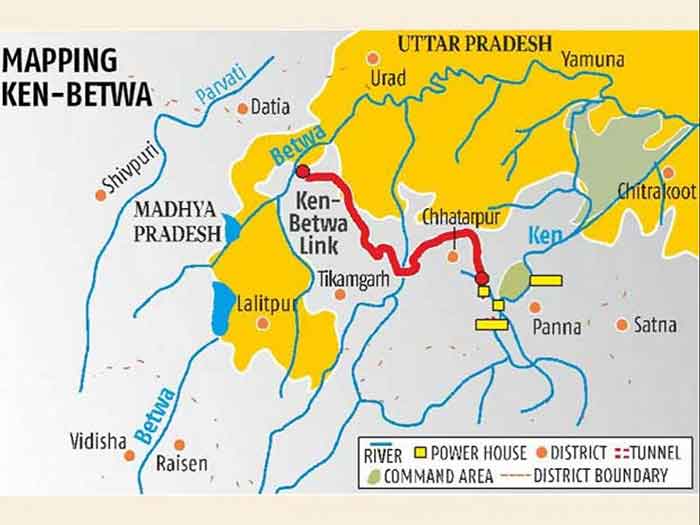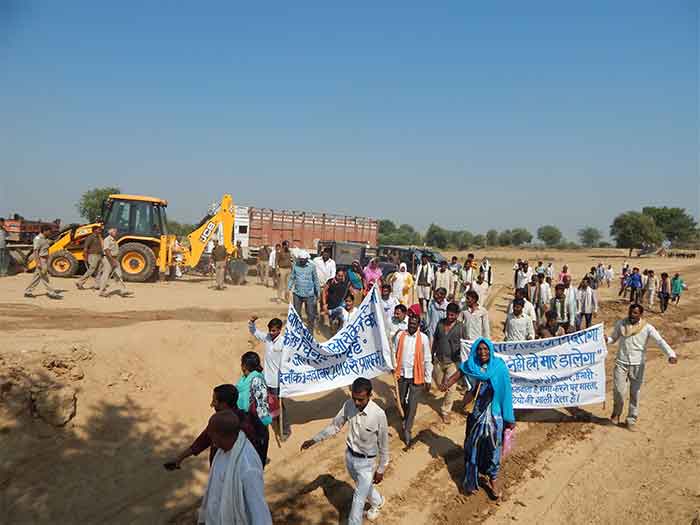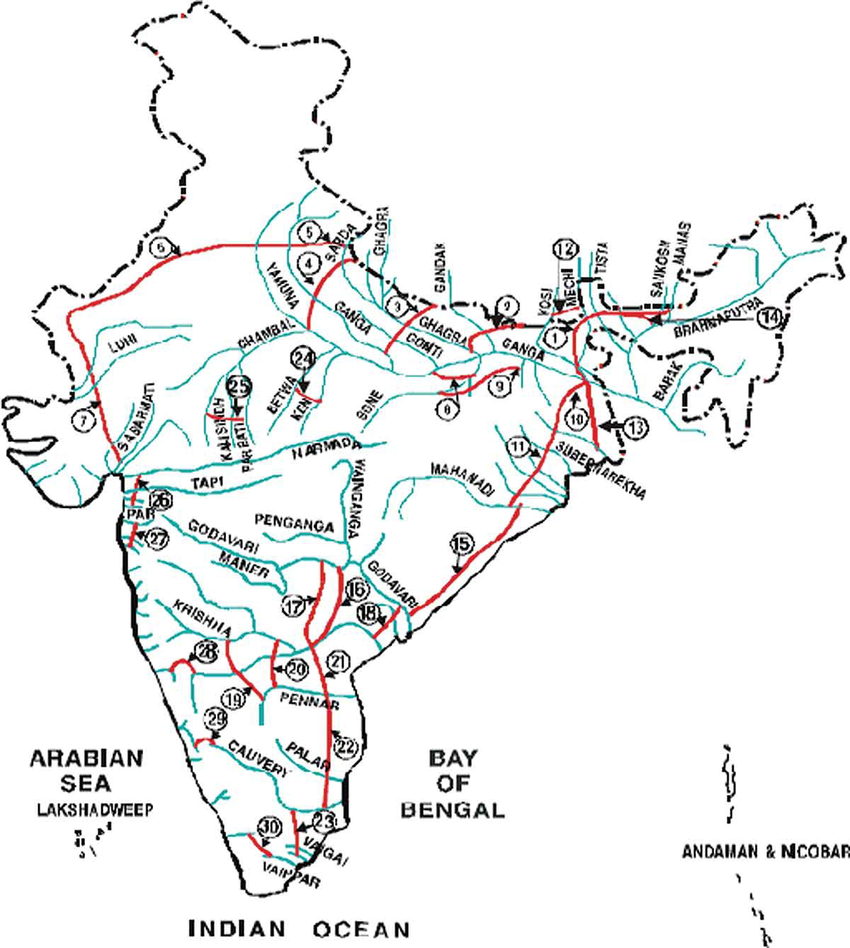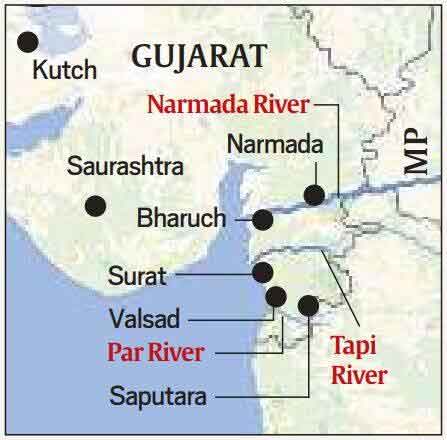
The Ken-Betwa River Link Project (KBRLP) is one of the most disputed river projects of India. Involving two states of Madhya Pradesh and Uttar Pradesh, this Rs. 35000 crore ( Rs. 3500 billion) project involves the construction of a dam and a 230 km canal, largely ( but not entirely) in Bundelkhand region of these two states, to take the water of Ken River to Betwa river. This is the first of the around 30 projects of the larger , and highly contentious, river inter-linking project. Perhaps for this reason, this has been persistently promoted at high levels by the government, despite being criticized repeatedly by several independent experts. What is more this criticism of independent experts , activists and local people has been backed by what is stated in several reports having official sanction, such as the report of the Central Powered Committee of the Supreme Court of India.
More specifically there are ten compelling and strong reasons why this project should be withdrawn immediately.
Firstly, this project involves the felling of over two million trees, mostly in the protected area of Panna Tiger Reserve. In these times of climate change a project which starts with felling two million trees should not even be looked at, let alone cleared. This is supposed to be a project which will contribute to reducing water scarcity. What about the water conserved by these two million trees? Each one of these two million trees is a silent water conserver and in addition also contributes to climate change mitigation. Here it should be remembered that the available studies of the water scarcity of Bundelkhand, such as those prepared by the Vigyan Shiksha Kendra (VSK)in collaboration with IIT, Delhi , have identified deforestation as an important cause of water scarcity.
Secondly, the basic premise that there is excess water in the Ken River available for transferring to Betwa river has been repeatedly questioned. The district magistrate of Panna, in letters during 2005-08 to the Planning Commission and other officials ( as already reported in the media ) said clearly—there is no surplus water in the Ken basin. Since then water in Ken and its smaller tributaries has been depleted further by some prolonged droughts as well as heavy sand mining ( a lot of this clearly illegal) which have depleted recharge in the nearby aquifers as well. In recent years highly depleted water flow in the Ken river has been noticed during the lean season. Some of the smaller tributaries are in fact badly threatened or vanishing in some stretches at least. Transfer of Ken water will further endanger the Ken river and increase the problems of people and animals depending on this river.
Thirdly, while the axing of two million trees is not justified under any circumstances, it becomes all the more unforgivable if this felling is carried out for a non-viable project whose most basic premise (of there being surplus water in a river available for transfer) is highly questionable.
Fourthly, threat to several wild animals , birds and fish, including already endangered ones, will increase further if the wild life habitats spread over several thousand hectares are submerged under this project and a dam is constructed. These include tigers, vultures, mahseer fish , gharials and several others.
Fifthly, over ten thousand people spread over about 10 villages are likely to be displaced by this project which is essentially a non-viable project based on false assumptions and unverified premises. These people living in lap of nature need to be helped, not displaced. It is strange that first people are displaced to create protected areas, then protected areas are disrupted to create dams and in addition people are displaced as well .
Sixhly, this is an expensive, Rs. 35000 crore project. Is it justified to spend such a huge budget on such a dubious and essentially non-viable project when so many priority needs of the poor people remain unmet. Bundelkhand is known for high levels of poverty which has increased further greatly in times of Covid, lockdowns and reverse migration.
Seventhly, it is well-established from the experience of water projects in Bundelkhand so far that large and medium dam projects, apart from causing displacement of communities and failing to resettle them in a satisfactory way, have also disappointed by not bringing the expected benefits. In fact some of the more destructive floods in Bundelkhand have been blamed on the arbitrary release of excess water by dams. On the other hand very encouraging results achieved by several small-scale water conservation and harvesting projects by several voluntary organizations of this region have clearly established that much better and cost-effective results can be achieved by concentrating more on such smaller, community-based works, supported by increasing cover of indigenous trees, regeneration of pastures and forests.
Eighth, the natural river flow river system in the rocky terrain has created what the CEC report says is a special and unique system of gorges, cliffs and riverine flora and fauna very rich in its own kind of biodiversity and its loss just cannot be compensated in any artificial way. The beautiful sights of this ecosystem have been cherished in the memory of many visitors and are an enduring source of happiness for people living here, whatever their other problems.
Ninth ,this project has suffered from the outset from poor project planning and lack of transparency. A letter signed by 30 experts and activists was sent to the Union Minister of Environment and Forests , registering a strong protest against this project and the arbitrariness involved in its implementation. This letter says, “The project has been plagued by sloppy, intentionally misleading and inadequate impact assessments, procedural violations and misinformation at every step of the way.” The signatories to this letter include Dr. Bhartendu Prakash , the author of two extensive studies on the water-resources of Bundelkhand region and Himanshu Thakkar, Co-odinator of South Asia Network of Dams, Rivers and People as well as former member of the government committee on linking rivers who has written innumerable reports and letters on this issue. The signatories also include Amita Bavaskar, former member of Forest Advisory Committee amd EAS Sarma, former Secretary, Govt of India. This letter says that basic information about the water availability in the two rivers has not been made available and other basic information has been held back from project affected people. In fact, if we look carefully at some comments made in reports having official sanction, then a very strong case for withdrawing this project can be made even on the basis of these scattered comments, but such observations have not reached the people affected by the project.
Last but not the least, the project has been pushed in the name of helping people of Bundelkhand by reducing their water scarcity but on the one hand it involves transferring water from Bundelkhand to Upper Betwa region and on the other hand its adverse impact on groundwater recharge in the downstream areas of Bundelkhand region is being ignored. The problems in the Upper Betwa region were in the first place created by ecologically harmful policies and can be solved by policy improvements, while avoiding all the destruction and high costs inherent in the KBRLP.
Bharat Dogra is a journalist and author. His recent books include include Man over Machine ( Gandhian Ideas For Our Times ) and Protecting Earth for Children.












































